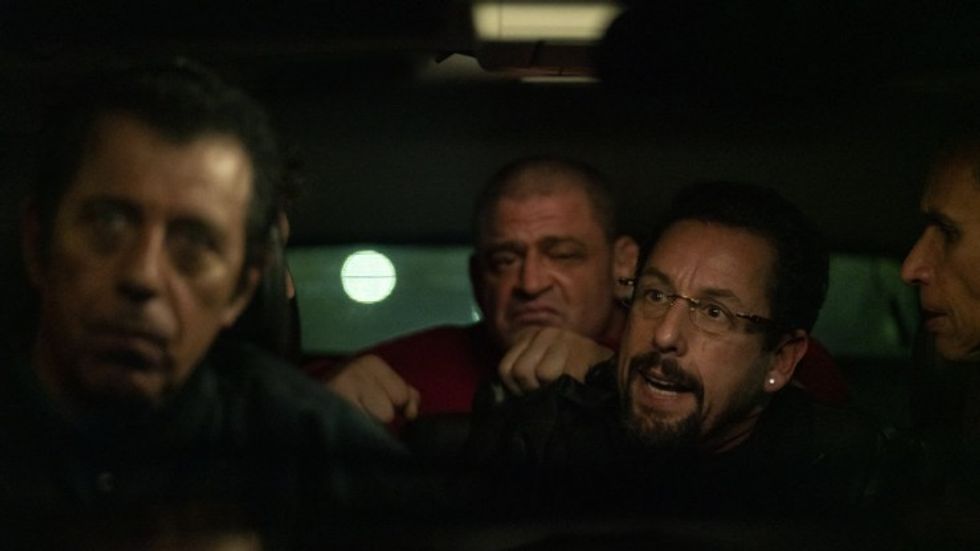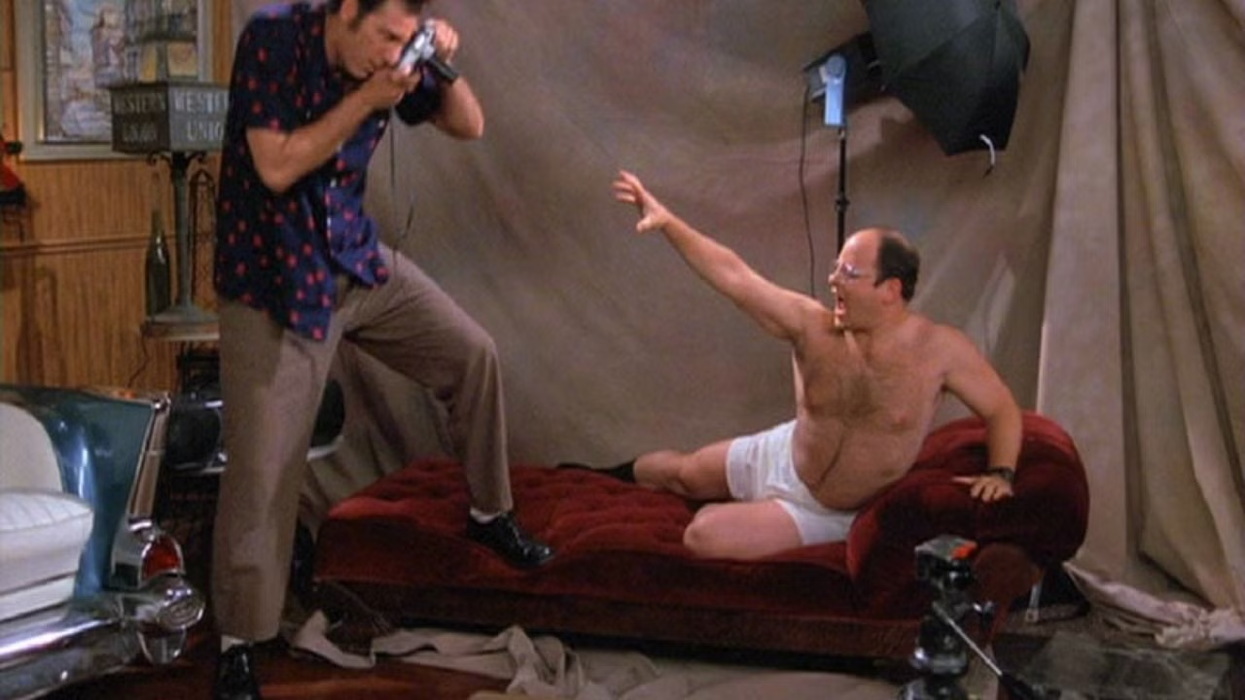Darius Khondji Was Forced To Shoot 'Uncut Gems' in New Ways and He Loved It
The renowned cinematographer and the film's colorist detail how they achieved the unique aesthetic behind the Safdie brother's latest.
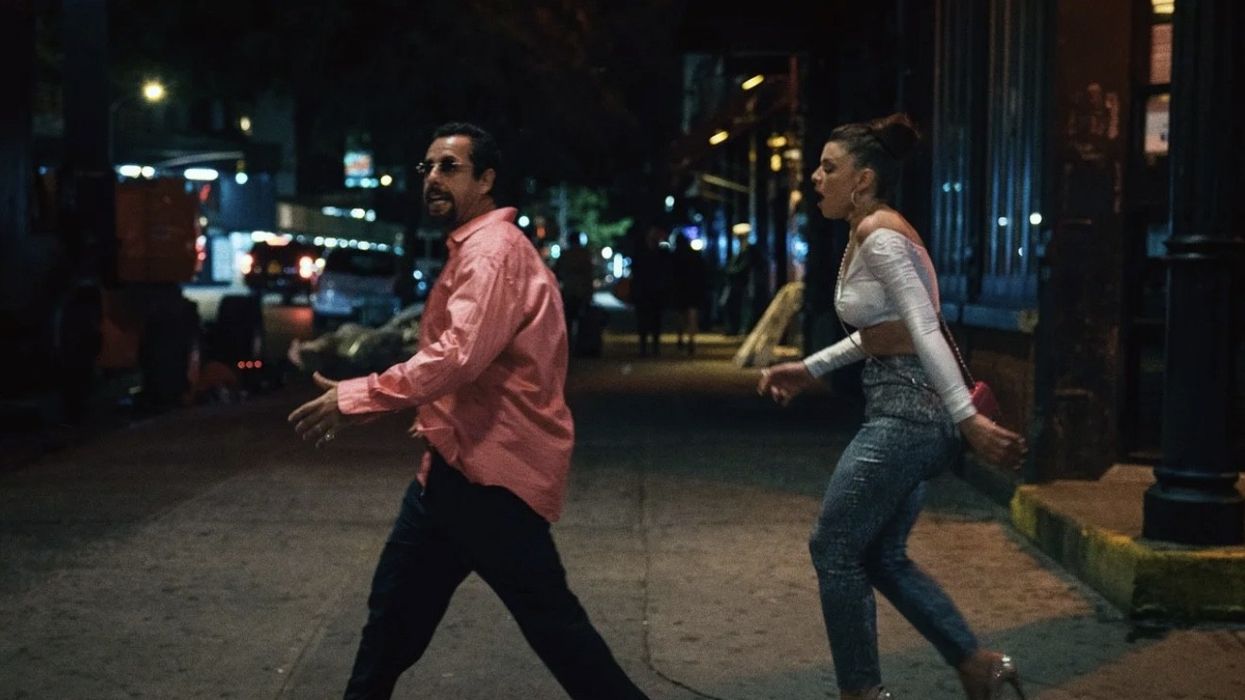
[Note: This article does contain mild spoilers.]
There’s a sequence in Uncut Gems, a Safdie brother’s film starring Adam Sandler as a gambling-addicted New York jewelry store owner named Howard Ratner, that acts as a quintessential teaching moment in how to block the familiar differently.
The scene has Howard rushing out of a nightclub arguing with his girlfriend Julia (Julia Fox) where singer The Weeknd has just performed for a crowd. The mood grows in intensity as they walk down the street before it eventually boils over. The emotion behind the dialog traditionally calls for close-ups, but the Sadfies instead tracked the characters in profile from a distance, as if the camera could be a pedestrian witnessing their argument from across the street.
“I love this moment,” says cinematographer Darius Khondji, whose work includes Se7en, Midnight in Paris, Amour and Evita. “I was so happy to shoot a scene like this in my life. You’d think it would have been something I’ve done before but it’s not. The Safdies made me shoot in ways I have never done before and that’s very exciting as a cameraman.”
Khondji initially met the directors at a party where they asked him to photograph the Jay-Z video for “Mercy Me.” Uncut Gems marks their first feature together. The story follows Howard, a married man with two children, as he tries to pay off gambling debts with one big score by selling a rare black opal at auction.
It doesn’t come easy. He has people threatening his life, a partying girlfriend he can’t keep up with, and a family drifting apart. Its chaos and anxiety rolled into one.
Visually, the Safdies sought an ‘80s aesthetic inspired by the postmodern architecture of Michael Graves, the work of Robert Altman, and a garish, gritty look that captured the realism of New York.
Khondji admits the approach isn’t what he’s accustomed to, as his photography principles lean more towards a ‘70’s glamorous style, but little by little it all made sense to him. “They [Safdies] had a very exciting vision that was very new to me and they were so unpretentious about it,” he says. “I lived through the ‘80s but never touched the texture in any project before.”
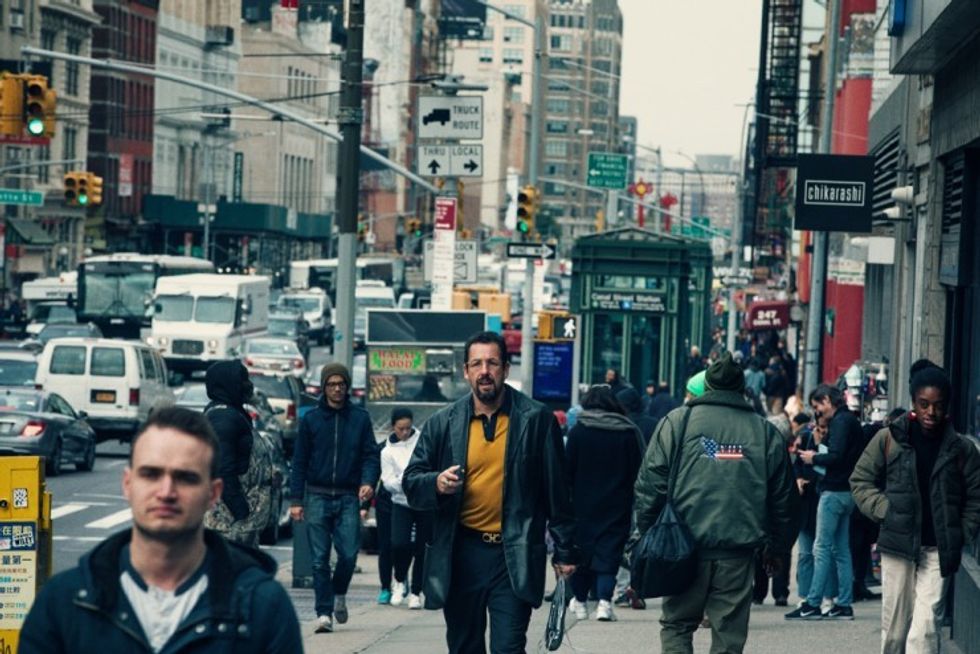
Compositionally, a combination of zooms, tracking shots, and long lenses formed a language where the camera would constantly follow the action. “I’m not used to shooting with long lenses and traditionally frame more around 50mm. Here, 75mm anamorphic was normal and we’d go up to 350mm regularly,” Khondji says.
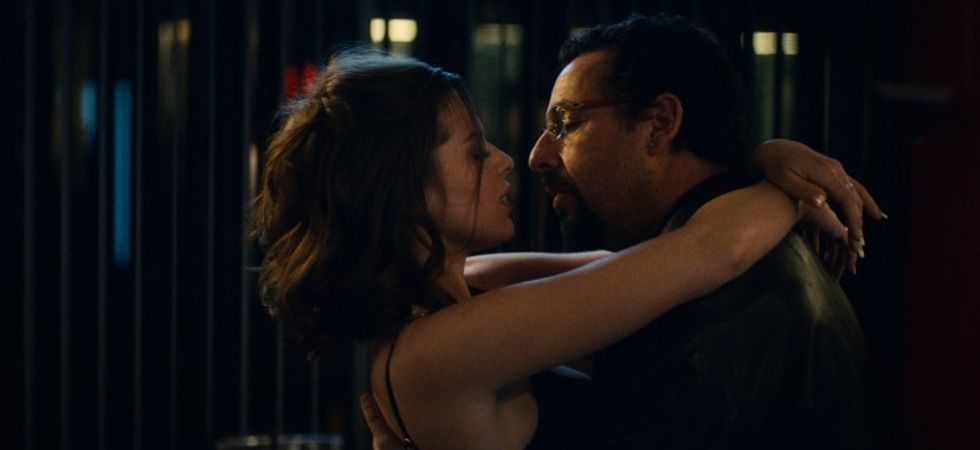
To do so, they finished with ARRISCAN at 4K and created custom LUTs to blend the digital shoots with the film scans. Van der Cruyssen also asked for the camera crew to shoot additional grain elements that were then scanned at 4K and sampled over the digital scenes.
Van der Cruyssen(Colorist) also asked for the camera crew to shoot additional grain elements that were then scanned at 4K and sampled over the digital scenes.
Color-wise, a palette of blues, blacks, and golds stylized the gritty, contrast environments. In the grade, Van der Cruyssen detailed it further. “The Safdies wanted a very cinematic but modern New York rendition. We started with a softer contrast, but as the DI progressed, the directors wanted to push the blacks darker and crunchier, something a bit less controlled and polished, and more aggressive and lively.”
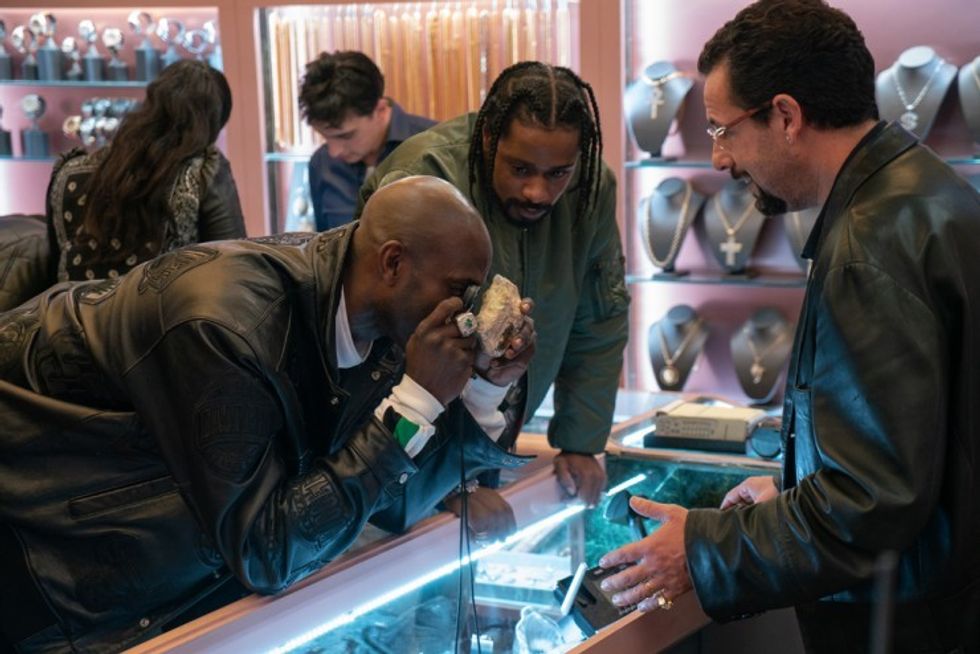
For most of the lighting, especially the exteriors, Khondji kept it simple using available light and filling the frame with front and top light – creating lighting without boundaries so the actors and camera could move freely. “The idea was to embrace it and let them shoot. I didn’t want to stop them or get in their way,” says the cinematographer.
The challenge behind that was keeping in mind the time of day and connecting the interiors to the exteriors, especially Howard’s office which has a large window. Van der Cruyssen notes they wanted to play with the look of his office as Howard varies in his emotional state, so they let the sky go darker depending on the moment.
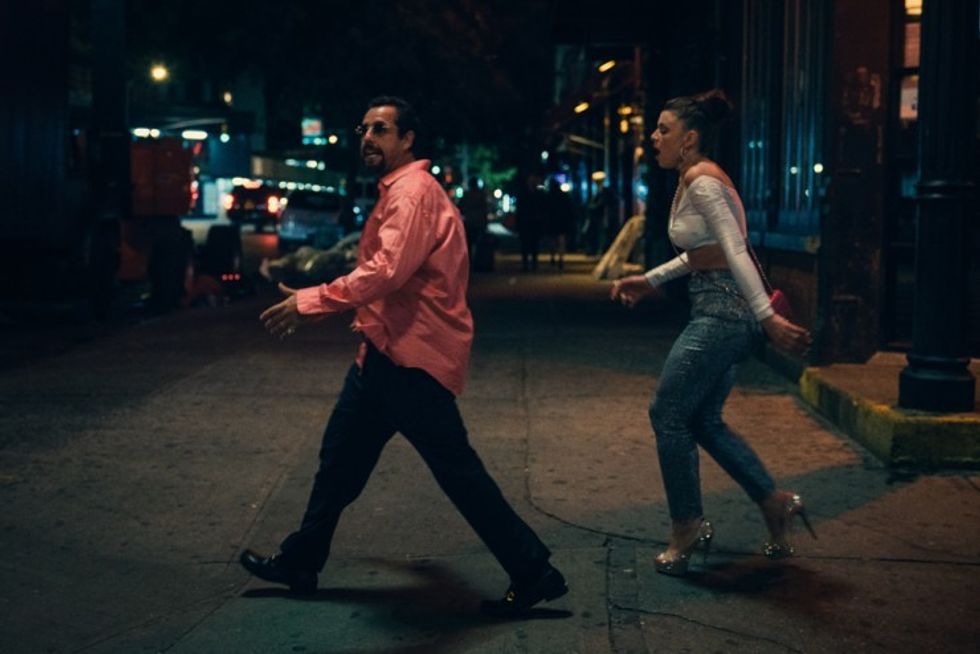
In finding the tone for the aforementioned exterior nightclub scene, Van der Cruyssen says, “It’s a very New York moment but it’s also a Safdie moment. They direct using nonprofessional actors mixed in the background and interactions for scenes. The color follows that in a way, being controlled within a very big and broad environment. The scene was shot digital so my first mission was to match it to film, add the grain, a tiny vignette, and let the scene play. We wanted our night exteriors to have different color, so we increased the subtle blues and cyans everywhere we could.”
For Khondji, the entire process was “a very uplifting experience for him and his crew.” “When I watched the final movie, I realized it’s something unique. I photographed it but it’s almost like I didn’t anymore. It’s a free spirit.”
Uncut Gems releases into theaters nationwide December 25.
